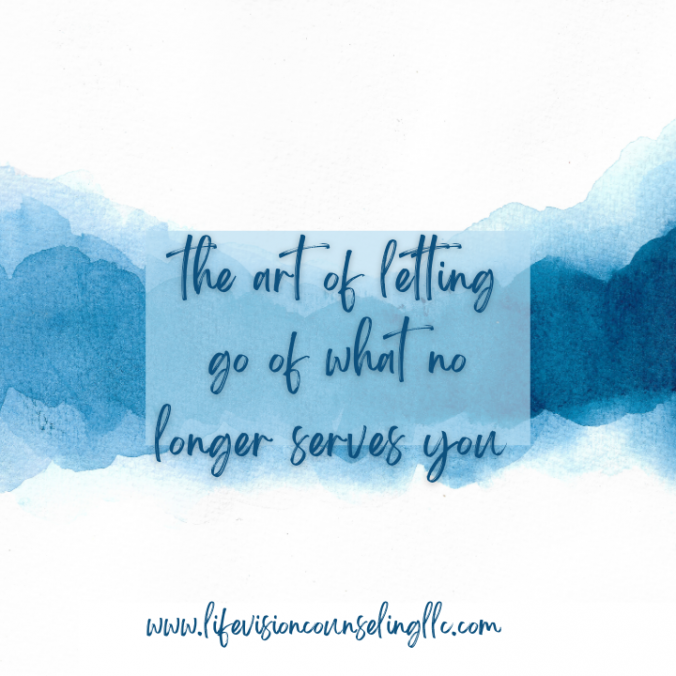The Art of Letting Go: Moving Forward With Intention and Grace
Letting go. It sounds simple, yet it can be one of the most challenging acts in life. Whether it’s a relationship, a job, a dream, or even a version of yourself, the decision to release something that no longer serves you requires courage, clarity, and trust.
As a counselor, I often see people struggle with the idea of letting go, fearing that it means giving up or admitting defeat. But in reality, letting go is not about failure—it’s about choosing yourself and making space for growth. It’s an art that requires intention and self-awareness, and when mastered, it allows us to move forward into a life that aligns with who we are and who we want to become.
Letting Go Is Not Quitting; It’s Choosing Growth
Letting go is often misunderstood as quitting. But the two couldn’t be more different. Quitting is most often rooted in avoidance or shame.
Letting go, however, is an intentional act. It’s about recognizing that holding on to something—whether out of habit, fear, or obligation—is preventing you from moving forward. It’s not about avoiding hard work or challenges; it’s about making a conscious choice to release what no longer aligns with your values, goals, or sense of self.
When you let go, you’re not running away. You’re stepping toward something better.
The Beauty of Release
Letting go is powerful because it creates space. Holding on tightly—whether to relationships, dreams, or expectations—can feel safe, but it often leaves us stagnant. When you let go, you open the door to possibility.
Think of it like clearing out a closet. At first, it’s hard to part with items you once loved or thought you needed. But as you let go of what’s outdated or ill-fitting, you make room for something that serves you better. Life works the same way. Releasing what no longer fits allows you to embrace what’s next.
Moving Forward With Intention
Letting go is not just about leaving something behind; it’s about moving forward with purpose. It’s a process of aligning your life with what truly matters to you. To do this, you need to reflect on what you’re holding on to and why.
Here are some steps to approach letting go with intention:
- Identify Where You Feel Stuck.
Is there something in your life that feels heavy or misaligned? Perhaps it’s a job that drains your energy and has turned toxic, a relationship that no longer supports your growth, or old programming that you “should” do something a certain way. - Let Go of Others’ Expectations. Examine your thoughts and feelings about what others seem to expect of you. By attempting to live life based on others’ expectations or perceptions, you might be living out of alignment with yourself.
- Acknowledge Your Emotions.
Letting go often comes with grief, even when it’s the right choice. It’s okay to mourn what you’re releasing. Honor your feelings—they’re part of the process. - Clarify Your Values and Goals.
What do you want your life to look like? What aligns with your values, purpose, and vision for the future? Use these answers to guide your decision. - Take a Small Step.
Letting go doesn’t have to happen all at once. Start with a small step—like having an honest conversation, setting a boundary, or exploring a new opportunity. - Trust Yourself.
Trust that you are capable of making choices that support your growth and well-being. Trust that you are powerful enough to navigate the new. Letting go is not about perfection; it’s about progress.
The Freedom of Moving Forward
When you master the art of letting go, you free yourself from the weight of what no longer serves you. You reclaim your energy and attention, directing it toward what truly matters.
Letting go is not a single act but an ongoing practice. Life will continue to present you with opportunities to release and realign. Each time you let go, you reaffirm your commitment to growth and transformation.
A Final Thought
Letting go is not about giving up—it’s about stepping up. It’s about saying, “I deserve a life that feels true to me.” It’s about trusting that what lies ahead is better than anything you leave behind.
So, take a deep breath. Release what’s weighing you down. And move forward, knowing that the art of letting go is also the art of creating a life you love.


